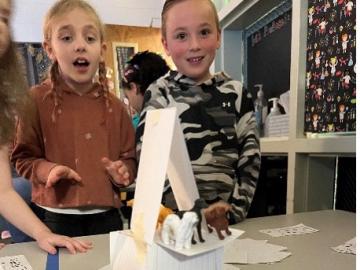
Filter News
Area of Research
- (-) Biological Systems (1)
- (-) Biology and Environment (56)
- (-) Neutron Science (32)
- Advanced Manufacturing (1)
- Building Technologies (1)
- Clean Energy (63)
- Computational Engineering (1)
- Computer Science (2)
- Electricity and Smart Grid (1)
- Energy Sciences (1)
- Fuel Cycle Science and Technology (1)
- Fusion and Fission (19)
- Fusion Energy (3)
- Isotope Development and Production (1)
- Isotopes (15)
- Materials (76)
- Materials Characterization (2)
- Materials Under Extremes (1)
- National Security (26)
- Nuclear Science and Technology (2)
- Supercomputing (73)
News Topics
- 3-D Printing/Advanced Manufacturing (4)
- Artificial Intelligence (4)
- Big Data (6)
- Bioenergy (19)
- Biology (24)
- Biomedical (4)
- Biotechnology (5)
- Buildings (1)
- Chemical Sciences (3)
- Clean Water (4)
- Climate Change (16)
- Composites (1)
- Computer Science (7)
- Coronavirus (4)
- Decarbonization (11)
- Energy Storage (2)
- Environment (34)
- Exascale Computing (2)
- Fossil Energy (1)
- Frontier (2)
- Grid (1)
- High-Performance Computing (11)
- Hydropower (3)
- Isotopes (1)
- Machine Learning (4)
- Materials (10)
- Materials Science (6)
- Mathematics (2)
- Mercury (2)
- Microscopy (3)
- Nanotechnology (3)
- National Security (2)
- Net Zero (1)
- Neutron Science (25)
- Nuclear Energy (1)
- Partnerships (2)
- Physics (2)
- Renewable Energy (1)
- Simulation (13)
- Space Exploration (1)
- Summit (2)
- Sustainable Energy (11)
- Transportation (2)
Media Contacts

A chemist from Oak Ridge National Laboratory attracted national attention when her advocacy for science education made People magazine’s annual “Women Changing the World” issue.

A new report published by ORNL assessed how advanced manufacturing and materials, such as 3D printing and novel component coatings, could offer solutions to modernize the existing fleet and design new approaches to hydropower.

Nine engineers from ORNL visited 10 elementary and middle school classrooms in three school districts during National Engineers Week, Feb. 21 to 24, 2023, describing and demonstrating the excitement of the engineering profession to more than 300 Tennessee students.

Scientists have long sought to better understand the “local structure” of materials, meaning the arrangement and activities of the neighboring particles around each atom. In crystals, which are used in electronics and many other applications, most of the atoms form highly ordered lattice patterns that repeat. But not all atoms conform to the pattern.

ORNL is teaming with the National Energy Technology Laboratory to jointly explore a range of technology innovations for carbon management and strategies for economic development and sustainable energy transitions in the Appalachian region.

ORNL researchers have identified specific proteins and amino acids that could control bioenergy plants’ ability to identify beneficial microbes that can enhance plant growth and storage of carbon in soils.

The Center for Bioenergy Innovation has been renewed by the Department of Energy as one of four bioenergy research centers across the nation to advance robust, economical production of plant-based fuels and chemicals.

Scientists at ORNL have confirmed that bacteria-killing viruses called bacteriophages deploy a sneaky tactic when targeting their hosts: They use a standard genetic code when invading bacteria, then switch to an alternate code at later stages of
The Autonomous Systems group at ORNL is in high demand as it incorporates remote sensing into projects needing a bird’s-eye perspective.

A DNA editing tool adapted by Oak Ridge National Laboratory scientists makes engineering microbes for everything from bioenergy production to plastics recycling easier and faster.


